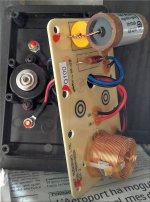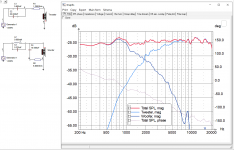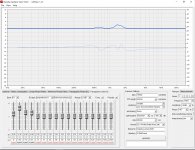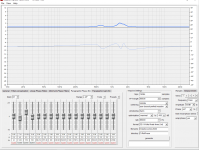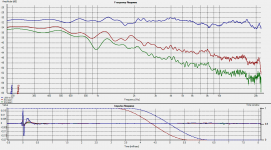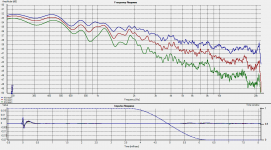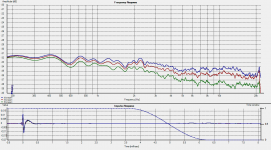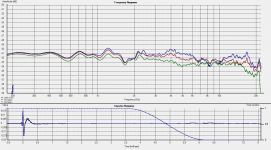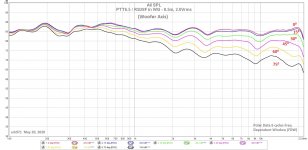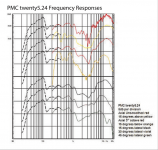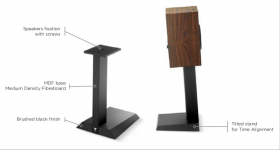In my modified KEF Q100 I did the bypass first and the sound change was overwhelming, between the modified box and the one that did not. Hotel California (Eagles). In stereo was AMAZING.
Weeks later, with the new sound already memorized, also the cemented resistance of the tweeter by a Mills. Great change again, undeniable, but not as spectacular as the previous one.
The tweeter deserves quality components. Nor is it necessary to spend a fortune.
PS: Always the same two people present to check for improvement. I have to decide whether to change the original yellow capacitor or redo the crossover.
Weeks later, with the new sound already memorized, also the cemented resistance of the tweeter by a Mills. Great change again, undeniable, but not as spectacular as the previous one.
The tweeter deserves quality components. Nor is it necessary to spend a fortune.
PS: Always the same two people present to check for improvement. I have to decide whether to change the original yellow capacitor or redo the crossover.
Attachments
Last edited:
Decided. New Harsch crossover to my KEF Q100 with the same philosophy as xrk971. First only one loudspeaker to compare.
I use DSP (with minimum phase) to final adjustments in frequency response instead of a more complex and therefore more expensive crossover. Light touch-ups.
Let us see what improvements I can get, but I don not want to contaminate the thread anymore.
Let us see what improvements I can get, but I don not want to contaminate the thread anymore.
Last edited:
With a 2kHz crossover frequency, the delay required is 1/2 of XO frequency period. Or 0.5ms/2 or 250usec and physical delay to accomplish this is x speed of sound. 250usec x 342m/sec is 8.55cm. I don’t think the tweeter voice coil on the KEF coaxial is that far behind woofer. Maybe in a PA coaxial where the CD is mounted way in the back. But I don’t know. You will need to measure it using acoustic interferometry to know exactly. That’s where you record 3 sweeps: tweeter only, woofer only, woofer and tweeter in parallel. Changing only wire connections and do not touch mic or speaker. Then use software to simulate the combined signal until the ripples and dips all match by adjusting delay. Use that delay x 2 as basis for Harsch XO frequency.
Thank you very much, I will think what to do.
In case anyone is interested I just made a touch-up with rePhase at 600 Hz and the sound is even better. Hotel California (Eagles). First with + 1dB and now only + 0.8 dB.
In case anyone is interested I just made a touch-up with rePhase at 600 Hz and the sound is even better. Hotel California (Eagles). First with + 1dB and now only + 0.8 dB.
Attachments
BTW, yours and KEF Q100 (measured by Zvu). And I no longer rave on the thread.
Attachments
Last edited:
When your done tweaking , may I interest you in changing those resistor XRK ?
For woofer go with Powertrons grainless very even sounding & transparent. Think Mundorf are marketing them under their new Ultra range. Tweeter Mundorf Supreme wire wound, it's got sweet highs but not sure if it will sound too bright on your set up.
Cheers
Thanks for the tip on Powertrons. Never heard of them but will look into it. Certainly, with as few components as this XO has, the very best resistors and a Miflex bypass are in order once I determine that the overall speaker is a go. I still have a baffle with the cutout for the RAAL. That will take a new XO design but perhaps a simple 4th order LR at 3500Hz is the simplest route?
There was a thread on home made carbon comp resistors using artists pencil leads and silver solder connectors - that might be kind of fun. The carbon pencil lead is supposed to give a smoother sound. That might be fun actually if I only need to make a pair of custom hand made resistors.
Sorry, I don’t know what you mean.
I do not want to distort the thread with my off-topics. You know, English is not my first language.
No worries, Maty. For the polar data from Zvu, what are the angles of the measurements? They look real nice though.
For the longest time, I wanted to buy the KEF LS50 to have a reference of a commercially well-done 2-way monitor. I am so glad I did not, because for the same cost (plus my labor), the PTT6.5 TL's with the RS28F and WG300 are so much better and in a completely different league - but not as compact.
For the longest time, I wanted to buy the KEF LS50 to have a reference of a commercially well-done 2-way monitor. I am so glad I did not, because for the same cost (plus my labor), the PTT6.5 TL's with the RS28F and WG300 are so much better and in a completely different league - but not as compact.
XRK971, would be interesting to compare your TL’s yo the PMC Twenty5 22 (possibly the new “I” version), that may be a better comparison. Any friendly dealers Local to you that would oblige?
I just did a search from PMC's website and their dealer locater says NYC is the closest one. The PMC doesn't have a waveguide, and I am pretty sure doesn't have a transient perfect Harsch XO. However, the 89dB sensitivity figure intrigues me. It looks like they did a slanted baffle to get some time alignment (that could have been achieved with a WG which also gives killer polars).
If you see the frequency responses of the tower version, PMC twenty5.24, 😱
[PDF] https://pmc-speakers.com/sites/default/files/attachments/twenty5-24 review HiFi Critic Sept 17.pdf
[PDF] https://pmc-speakers.com/sites/default/files/attachments/twenty5-24 review HiFi Critic Sept 17.pdf
Attachments
That PMC doesn’t have a very smooth or flat response. Looks quite off - hard to believe a commercial “monitor” would measure that badly.
And internally it does not incorporate material to dampen vibrations.
PMC twenty5 24 only € 6,250 in Spain.
PMC twenty5 24 only € 6,250 in Spain.
Attachments
- Home
- Loudspeakers
- Multi-Way
- Simple Passive Harsch XO Using PTT6.5 and RS28F in a Waveguide
